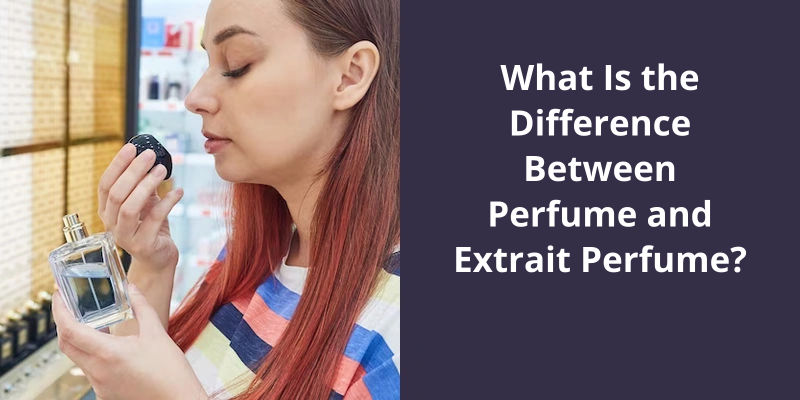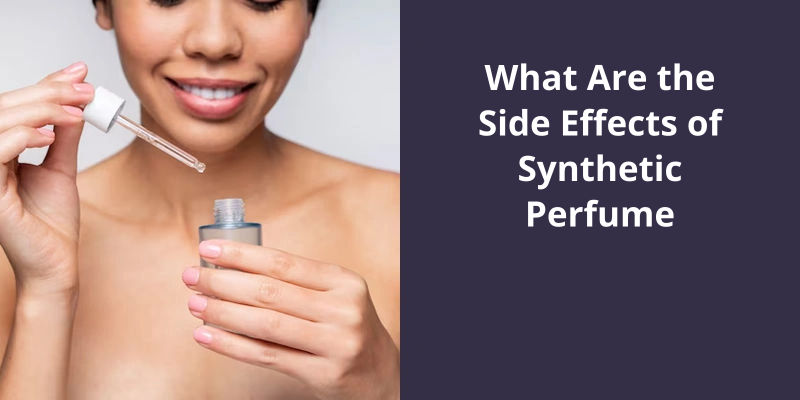Perfume is primarily a liquid. It is a mixture of alcohol and fragrant essential oils, diluted to a concentration to achieve a desired intensity of scent. However, the method of packaging can turn it into an aerosol. The liquid perfume is put under pressure in a can with a propellant gas. When the valve is opened, the perfume is forced out of the can as tiny droplets dispersed in the gas, forming a spray or mist, which is the definition of an aerosol. So while the perfume itself is a liquid, it can be presented as an aerosol for easy and wide application.

Is Perfume a Liquid or Not?
Perfume is a fascinating and complex substance that defies simple categorization. While it’s commonly referred to as a liquid, it’s true nature transcends it’s physical state. When perfume is contained within a bottle, it exists as a liquid, carefully crafted through a meticulous blending of various aromatic compounds. These compounds, known as fragrance notes, come together to create a harmonious and unique scent.
However, when perfume is released into the air, it’s transformation begins. Through the process of evaporation, the liquid perfume turns into a gas, releasing it’s fragrant molecules into the surrounding environment. This gaseous state is what truly defines perfume, as it’s the airborne molecules that interact with our olfactory receptors, creating the sensory experience we associate with fragrance.
It’s this ethereal quality that distinguishes perfume from other substances and makes it a beloved and indispensable part of our lives.
The Art of Perfume Packaging and Bottle Design.
Perfume packaging and bottle design is an integral part of the overall perfume experience. The design of the bottle and it’s packaging not only provides protection to the fragrance but also adds to it’s aesthetic appeal.
The art of perfume packaging involves choosing the right materials, shapes, and sizes that enhance the fragrance’s visual representation. The bottle design can communicate the essence of the fragrance, whether it’s classic, modern, or luxurious.
Perfume bottles can be made from various materials like glass, crystal, or even plastic. They come in different shapes, from traditional designs to unique, avant-garde forms. The choice of packaging materials and design elements can convey the brand’s identity and target audience.
The packaging also plays a crucial role in preserving the fragrance. It protects the perfume from exposure to light, heat, and air, which can degrade it’s quality. Many perfume packages incorporate special features like UV-resistant coatings, airtight seals, or protective sleeves to ensure the longevity of the fragrance.
In conclusion, perfume packaging and bottle design are carefully crafted to enhance the overall experience of using the fragrance. They not only provide protection to the perfume but also serve as a visual representation of the brand and it’s identity.
The containers must also be placed in a clear, quart-sized plastic bag. Each passenger is allowed only one bag, and the bag must be taken out separately for screening. So, if your perfume bottle meets these requirements, you can definitely bring it with you when traveling.
Can Perfume Bottles Go Through TSA?
In general, TSA Regulations allow you to take perfume on the plane. However, you’ve to follow their “3-1-1 Rule”. The rule states that liquids, aerosols, and gels must be stored in containers that can hold 3.4 ounces (100 millilitres) or less. This means that if your perfume bottle is larger than this, you won’t be able to bring it through security.
It’s also worth noting that some airlines may have additional restrictions or guidelines when it comes to carrying perfumes or other liquids on board. So it’s always a good idea to check with your specific airline before you travel to ensure you’re in compliance with their rules.
Just make sure to pack it securely and be prepared for it to be inspected during the screening process.
Tips for Packing Perfume Bottles Securely While Traveling
When packing perfume bottles for travel, it’s important to ensure they’re securely protected to prevent potential leaks or breakage. Here are some tips to help you pack your perfume bottles safely:
- Place your perfume bottle inside a zip-lock bag or wrap it in plastic wrap to provide an extra layer of protection against leaks.
- Consider using a small travel-sized perfume bottle or decanting your fragrance into a travel-friendly container, reducing the risk of damage to a larger, more fragile bottle.
- Use bubble wrap or padded materials to wrap the perfume bottle and cushion it within your luggage or carry-on bag.
- Ensure that the perfume bottle is kept in an upright position to minimize the chances of leakage during transit.
- If you’re traveling by air, make sure to comply with the airline’s regulations on carrying liquids in your carry-on luggage. You may need to place the perfume bottle in a clear, resealable plastic bag with a maximum volume allowance.
Following these tips will help safeguard your perfume bottles and allow you to enjoy your favorite fragrances while traveling without any unwanted spills or damages.
Source: Can You Bring Perfume on a Plane in Carry-on Lugagge?
Perfume aerosols, also known as spray perfumes, are popular due to their convenience and ability to disperse fragrance evenly. These aerosols consist of a liquid perfume that’s pressurized and stored in a canister. When the nozzle is pressed, the liquid is transformed into a fine mist, allowing it to disperse easily into the surrounding air. The term “aerosol” in perfume refers to the quick evaporation of the liquid upon release, creating a pleasant and lingering scent.
What Is the Meaning of Aerosol in Perfume?
The term “aerosol” in the context of perfume refers to the form in which the fragrance is dispensed. An aerosol typically consists of a liquid or solid substance combined with a propellant gas, which is usually compressed air or a volatile organic compound.
This allows for a more even distribution of the fragrance and enables it to reach areas that may be difficult to reach with a traditional liquid perfume.
The evaporation of the liquid in an aerosol perfume occurs rapidly due to the presence of the propellant gas. As the aerosol is released from the container and dispersed into the open air, the pressure decreases, causing the liquid fragrance to quickly evaporate and dissolve into the surrounding air. This rapid evaporation contributes to the immediate release of the scent and enhances the overall aromatic experience.
It’s important to note that not all perfumes are available in aerosol form. Many fragrances are still primarily sold as traditional liquid perfumes, which are applied by dabbing or spraying directly onto the skin. The choice between aerosol and liquid perfumes ultimately depends on personal preference and the desired application method.
This allows for a more even distribution of the scent and a wider coverage area.
The History of Aerosol Perfumes
Throughout history, perfumes have been primarily in liquid form. However, the introduction of aerosol technology revolutionized the way fragrances are delivered and used. Aerosol perfumes consist of a liquid fragrance combined with a propellant, usually a compressed gas, which allows the fragrance to be sprayed in a fine mist.
The history of aerosol perfumes can be traced back to the mid-20th century when aerosol packaging gained popularity. It offered convenience and allowed perfumes to be easily dispensed without the need for direct contact or extensive application.
Over time, aerosol perfumes became more widespread, offering a portable and practical solution for individuals to carry and apply their favorite scents. This advancement in packaging technology expanded the accessibility and versatility of perfumes, allowing people to enjoy their fragrances in a more convenient and efficient way.
Today, both liquid and aerosol perfumes coexist in the market, providing consumers with different options based on their personal preferences and needs. Whether in liquid or aerosol form, perfumes continue to be cherished for their ability to evoke emotions, enhance personal style, and leave a lasting impression.
The perfume industry, a key segment of the beauty market, is flourishing due to the growing demand for beauty products worldwide. With their enchanting scents and unique compositions, perfumes attract a wide range of consumers. As the beauty industry continues to expand, the perfume sector is anticipated to experience significant growth in the coming years.
What Industry Does Perfume Fall In?
Perfume is an integral part of the beauty industry, which falls under the larger umbrella of the personal care industry. The beauty industry encompasses a wide range of products, including skincare, haircare, makeup, and fragrances. Perfumes, specifically, are composed of fragrances and various oils that are carefully blended to create a pleasant aroma.
The global beauty industry has witnessed rapid growth in recent years, driven by the increasing demand for beauty products across the globe. This growing demand is fueled by factors such as changing lifestyles, rising disposable incomes, and a greater emphasis on personal grooming and self-care. As consumers become more conscious about their appearance and seek ways to enhance their overall beauty and well-being, the demand for perfumes continues to surge.
The perfume market has expanded globally, with numerous brands and fragrances catering to diverse consumer preferences. Perfume compositions can vary widely, ranging from floral and fruity scents to musky and woody aromas. This wide variety allows individuals to choose fragrances that align with their personal preferences and lifestyles.
The Regulations and Standards Governing the Production and Sale of Perfumes
Perfumes are classified as liquids rather than aerosols. The production and sale of fragrances are subject to regulations and standards to ensure product safety and consistency. These guidelines cover aspects like ingredient labeling, manufacturing practices, and packaging requirements. It’s important for manufacturers to comply with these regulations to uphold quality and protect consumers.
Conclusion
The presence of aerosols in the form of perfume sprays adds a unique user experience, allowing for a more controlled and spread-out application of the fragrance.





